The automotive market is bustling with various models vying for consumer attention, and today we pit two impressive contenders against each other: the Kia Ceed and the VW T-Roc. Both vehicles offer unique features and performance parameters that cater to diverse preferences in the compact car and SUV segments. Let’s delve deeper into their specifications and innovations to see which one might reign supreme.
Kia Ceed vs VW T-Roc – Which model is better for everyday use?
Design and Body Type
The Kia Ceed is primarily known as a hatchback, presenting a visually appealing design with a sporty aesthetic. It measures 4315 mm in length and 1800 mm in width, giving it a compact yet robust appearance. In contrast, the VW T-Roc is an SUV that stands taller, with a height ranging from 1527 mm to 1584 mm. These differences reflect the varying purposes the two vehicles aim to satisfy: the Ceed leaning towards urban agility while the T-Roc offers a commanding presence and versatility
Engine Options and Performance
Under the hood, the Kia Ceed offers a range of petrol engines, including a 1.0-liter three-cylinder engine with outputs of 100 HP and a more robust 1.5-liter four-cylinder engine producing 140 HP. The Ceed’s engine lineup emphasizes fuel economy, achieving consumption figures of approximately 6–6.4 L/100 km. Its acceleration from 0 to 100 km/h takes between 9.5 and 13.2 seconds, depending on the configuration.
The VW T-Roc, on the other hand, provides a wider selection of powertrains, including petrol and diesel options, with a maximum output reaching up to 300 HP in the high-performance variant. With a fuel consumption range of 4.7 to 6.3 L/100 km, it aims to be economical. Acceleration across different variants can be as swift as 4.9 seconds for the performance models, displaying the T-Roc's versatility and adaptability.
Transmission and Drivetrain
The Kia Ceed is available with both manual and dual-clutch automatic transmission options, optimized for a smooth driving experience, while maintaining front-wheel drive as its primary drivetrain. The lineup's excellent balance between comfort and performance enhances its reputation as a hatchback suitable for daily commutes.
Conversely, the VW T-Roc excels with its front-wheel drive and optional all-wheel drive setup, providing enhanced traction and stability. This versatility in drivetrain choices allows it to handle a broader range of driving conditions, making it an excellent option for adventurous drivers.
Interior and Technological Innovations
Both vehicles craft a compelling interior experience, but they cater to different preferences in terms of technology and aesthetics. The Kia Ceed focuses on functionality, offering solid materials and a user-friendly infotainment system. It accommodates up to 5 passengers with a trunk capacity ranging from 357 to 395 liters, making it efficient for daily errands and weekend getaways.
The T-Roc, being an SUV, provides a more spacious cabin with advanced tech features. Its trunk capacity can range up to 445 liters, paired with a practical design that allows for easy usage of space. Innovations in the T-Roc include a digital cockpit and various connectivity options that appeal to tech-savvy consumers.
Safety and Efficiency
When discussing safety, both vehicles are equipped with advanced safety features standard in modern cars today. The Ceed places emphasis on comfort and ease of use, while the T-Roc includes features that promote optimal road handling and accident prevention.
As for environmental considerations, the Ceed has a CO2 emission range of 137–146 g/km, reflecting its commitment to efficiency. The T-Roc, depending on the variant and configuration, emits between 125 and 194 g/km, showcasing the benefits and drawbacks of its broader powertrain portfolio.
Conclusion
Ultimately, choosing between the Kia Ceed and VW T-Roc boils down to personal preference and intended use. The Ceed stands out as a sporty and efficient hatchback ideal for city driving, while the T-Roc offers the versatility and performance expected from a compact SUV. Both models bring their unique strengths to the table, promising drivers a rewarding experience tailored to their lifestyle.
Whether you prioritize agility and style or power and space, these two vehicles embody distinct characteristics that are worth considering in today’s competitive automotive landscape.
Here’s where it gets real: The technical differences in detail
Costs and Efficiency:
Price and efficiency are often the first things buyers look at. Here it becomes clear which model has the long-term edge – whether at the pump, the plug, or in purchase price.
Kia Ceed has a slightly advantage in terms of price – it starts at 23500 £, while the VW T-Roc costs 26400 £. That’s a price difference of around 2961 £.
Fuel consumption also shows a difference: VW T-Roc manages with 5.50 L and is therefore barely noticeable more efficient than the Kia Ceed with 6 L. The difference is about 0.50 L per 100 km.
Engine and Performance:
Power, torque and acceleration say a lot about how a car feels on the road. This is where you see which model delivers more driving dynamics.
When it comes to engine power, the VW T-Roc has a hardly perceptible edge – offering 150 HP compared to 140 HP. That’s roughly 10 HP more horsepower.
In acceleration from 0 to 100 km/h, the VW T-Roc is barely noticeable quicker – completing the sprint in 8.90 s, while the Kia Ceed takes 9.50 s. That’s about 0.60 s faster.
In terms of top speed, the VW T-Roc performs minimal better – reaching 212 km/h, while the Kia Ceed tops out at 197 km/h. The difference is around 15 km/h.
There’s also a difference in torque: Kia Ceed pulls hardly perceptible stronger with 253 Nm compared to 250 Nm. That’s about 3 Nm difference.
Space and Everyday Use:
Beyond pure performance, interior space and usability matter most in daily life. This is where you see which car is more practical and versatile.
Both vehicles offer seating for 5 people.
In curb weight, Kia Ceed is to a small extent lighter – 1298 kg compared to 1465 kg. The difference is around 167 kg.
In terms of boot space, the VW T-Roc offers slightly more room – 475 L compared to 395 L. That’s a difference of about 80 L.
In maximum load capacity, the VW T-Roc performs minimal better – up to 1350 L, which is about 59 L more than the Kia Ceed.
When it comes to payload, VW T-Roc minimal takes the win – 515 kg compared to 490 kg. That’s a difference of about 25 kg.
Who comes out on top?
Overall, the VW T-Roc shows itself to be wins solidly and secures the title of DriveDuel Champion.
It convinces with the more balanced overall package and proves to be the more versatile choice for everyday use.
Costs and Consumption
View detailed analysis
Engine and Performance
View detailed analysis
Dimensions and Body
View detailed analysis
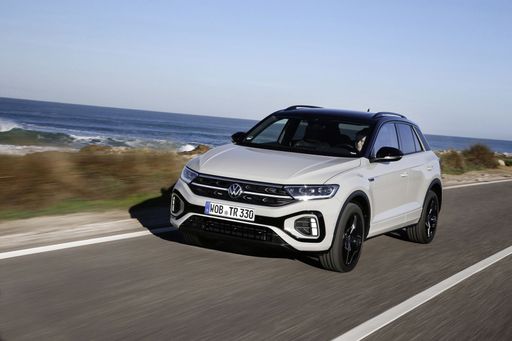 @ Volkswagen AG / VW Media
@ Volkswagen AG / VW Media
VW T-Roc
Kia Ceed
The Kia Ceed is a sensible, stylish hatchback that gives buyers more than they'd expect for the money, blending practical space with crisp, modern looks. It drives with measured confidence and comes loaded with user-friendly kit, so you can enjoy daily life behind the wheel without breaking into a sweat.
details @ Kia Corporation
@ Kia Corporation
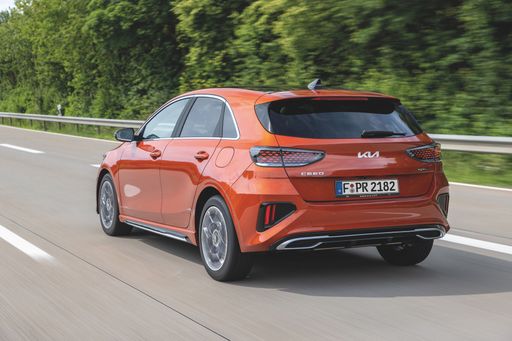 @ Kia Corporation
@ Kia Corporation
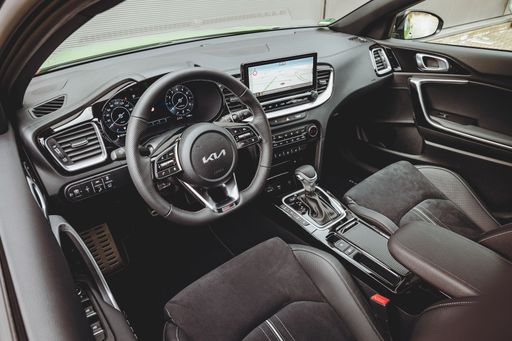 @ Kia Corporation
@ Kia Corporation
VW T-Roc
The VW T-Roc mixes cheeky, coupe-like styling with the everyday sense and space of an SUV, so it looks fun without sacrificing family sense. It’s a likeable all-rounder with tidy road manners and plenty of personality, ideal if you want a car that’s practical enough for chores but entertaining enough to enjoy.
details @ Volkswagen AG / VW Media
@ Volkswagen AG / VW Media
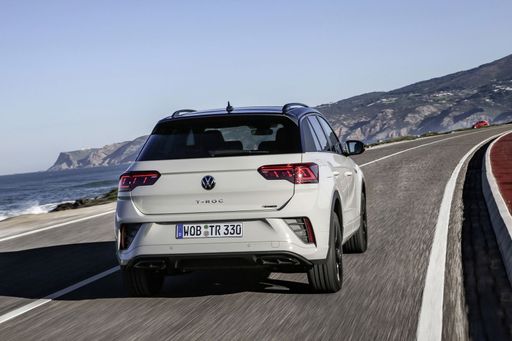 @ Volkswagen AG / VW Media
@ Volkswagen AG / VW Media
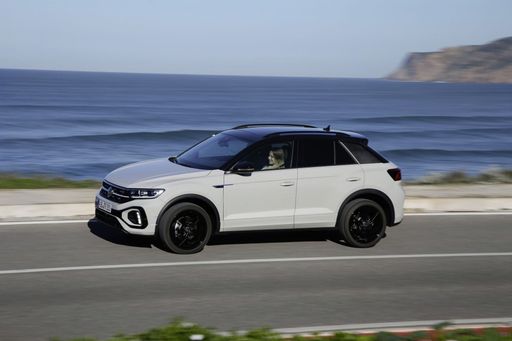 @ Volkswagen AG / VW Media
@ Volkswagen AG / VW Media
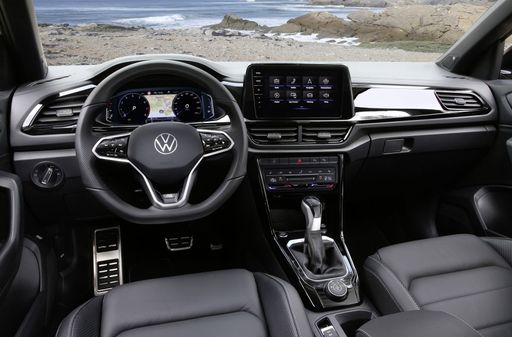 @ Volkswagen AG / VW Media
@ Volkswagen AG / VW Media
 @ Kia Corporation
@ Kia Corporation
|
 @ Volkswagen AG / VW Media
@ Volkswagen AG / VW Media
|
|
|
|
Costs and Consumption |
|
|---|---|
|
Price
23500 - 26300 £
|
Price
26400 - 38000 £
|
|
Consumption L/100km
6 - 6.4 L
|
Consumption L/100km
5.5 - 6.3 L
|
|
Consumption kWh/100km
-
|
Consumption kWh/100km
-
|
|
Electric Range
-
|
Electric Range
-
|
|
Battery Capacity
-
|
Battery Capacity
-
|
|
co2
137 - 146 g/km
|
co2
126 - 143 g/km
|
|
Fuel tank capacity
50 L
|
Fuel tank capacity
50 L
|
Dimensions and Body |
|
|---|---|
|
Body Type
Hatchback
|
Body Type
SUV
|
|
Seats
5
|
Seats
4 - 5
|
|
Doors
5
|
Doors
2 - 5
|
|
Curb weight
1298 - 1372 kg
|
Curb weight
1465 - 1539 kg
|
|
Trunk capacity
357 - 395 L
|
Trunk capacity
284 - 475 L
|
|
Length
4315 mm
|
Length
4271 - 4373 mm
|
|
Width
1800 mm
|
Width
1811 - 1828 mm
|
|
Height
1447 mm
|
Height
1527 - 1573 mm
|
|
Max trunk capacity
1253 - 1291 L
|
Max trunk capacity
1350 L
|
|
Payload
478 - 490 kg
|
Payload
368 - 515 kg
|
Engine and Performance |
|
|---|---|
|
Engine Type
Petrol, Petrol MHEV
|
Engine Type
Petrol, Petrol MHEV
|
|
Transmission
Manuel, Automatic
|
Transmission
Manuel, Automatic
|
|
Transmission Detail
Manual Gearbox, Dual-Clutch Automatic
|
Transmission Detail
Manual Gearbox, Dual-Clutch Automatic
|
|
Drive Type
Front-Wheel Drive
|
Drive Type
Front-Wheel Drive
|
|
Power HP
100 - 140 HP
|
Power HP
115 - 150 HP
|
|
Acceleration 0-100km/h
9.5 - 13.2 s
|
Acceleration 0-100km/h
8.9 - 12.3 s
|
|
Max Speed
178 - 197 km/h
|
Max Speed
187 - 212 km/h
|
|
Torque
172 - 253 Nm
|
Torque
200 - 250 Nm
|
|
Number of Cylinders
3 - 4
|
Number of Cylinders
3 - 4
|
|
Power kW
74 - 103 kW
|
Power kW
85 - 110 kW
|
|
Engine capacity
998 - 1482 cm3
|
Engine capacity
999 - 1498 cm3
|
General |
|
|---|---|
|
Model Year
2024
|
Model Year
2024 - 2025
|
|
CO2 Efficiency Class
E
|
CO2 Efficiency Class
E, D
|
|
Brand
Kia
|
Brand
VW
|
What drivetrain options does the Kia Ceed have?
The Kia Ceed is available as Front-Wheel Drive.
The prices and data displayed are estimates based on German list prices and may vary by country. This information is not legally binding.
